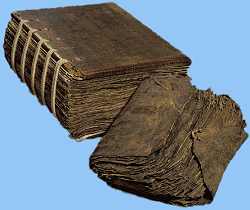The Great Fire of 1728
in Copenhagen, Denmark
For a Complete Account of Arni Magnusson's life and work see here.
The account below has been freely adapted from several works, including the one above.
[HOME]
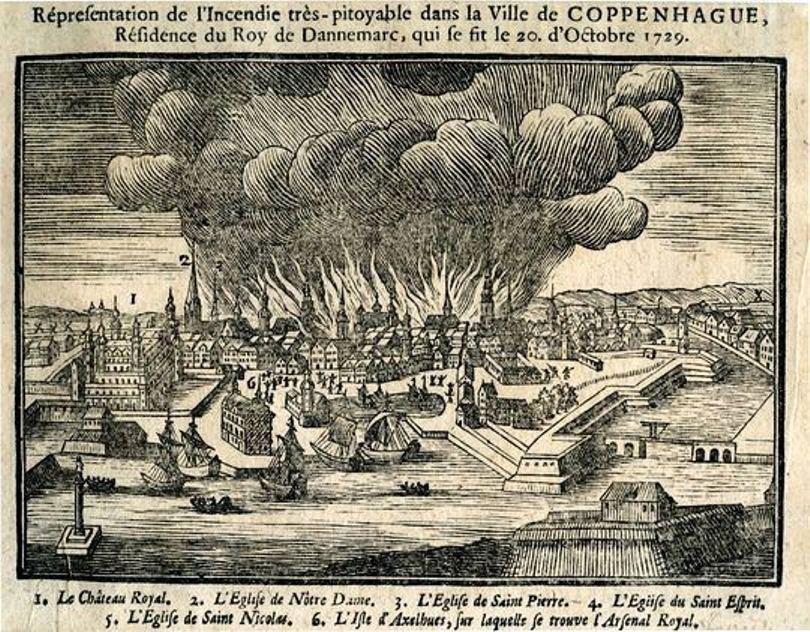 |
The Great Fire of 1728 started on the evening of October 20th and burned until the morning of October 23rd. It was the largest fire in the history of
While the human and property losses were tragic, the cultural loss was staggering. Nearly half of the medieval section of the city was destroyed, and after the Fire of 1795, few traces of medieval
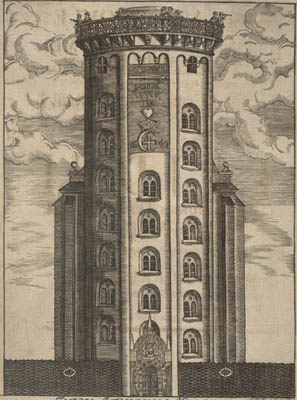
The Rundetårn (Round Tower)
Most buildings were largely timber-framed. The summer of 1728 was warm and dry and the good weather lasted until well into the autumn. On the evening of Wednesday, October 20, a fire broke out in a building by Vesterport, apparently started when a seven-year-old boy knocked over a candle, setting off a conflagration which lasted until the Saturday and destroyed a large part of the city, including the entire university campus and professorial residences in the vicinity, several of the main churches including Vor Frue Kirke and Helligåndskirke, and with the latter the University Library in its loft, and hundreds of other buildings and houses.
Jón Ólafsson wrote an account of the fire shortly after the catastrophe struck, describing how many aspects of the fire-fighting were apparently bungled at first. The fire brigade had difficulty in bringing in its pumps through the crowds that filled the narrow streets in the quarter. Water was also scarce, since the supply had been cut off in the parts of the city where the fire blazed due to work at Peblings Sø. When water was supposed to be fetched from the canals outside the city walls, the military commander in the city had the gates closed to hinder it, because he feared desertion by conscripts. There was a strong southwesterly wind and the timber-framed buildings were parched after the warm summer. All this combined to make the fire spread quickly. Eventually, the fire-fighting was organized better and, with the help of thousands of soldiers and sailors from the city garrison and fleet, the authorities managed to extinguish the fire early on the Saturday morning.
Jón Ólafsson writes that Árni Magnússon's residence burnt down around four o'clock on Thursday afternoon. When Magnússon heard on the Thursday morning that the spire of Vor Frue Kirke had collapsed and the fire would clearly not be contained he began trying to rescue his library with the help of his servants and two Icelanders, Jón Ólafsson and Finnur Jónsson, who later became bishop but was then a student in Copenhagen. They piled books and furniture into a carriage and eventually his coachman managed to force his way through the crowds in the streets with three or four loads to the house of Hans Becker, a timber merchant who had worked as a scribe for Árni Magnússon while the land register was being compiled in Iceland and for several years afterwards, and who now provided his old master with a roof over his head.
Árni Magnússon lived just over a year after the Great Fire. The ensuing winter was harsh, with heavy frosts at the same time as housing and necessities were scarce. Like many others, Magnússon was homeless and had to move three times in that single year. On Christmas Eve 1729, he fell ill and it was obvious that he would not survive. On January 6, 1730 he was so weak that when State Counsellor Thomas Bartholin, the grandson of the namesake Árni Magnússon worked for during his first years in Copenhagen, and Assessor Hans Gram visited him to write a will for him and his wife, he could not sign it unassisted.
On the morning of January 7, 1730, at a quarter to six in the morning, Árni Magnússon died in his sixty-seventh year. He was buried in the north choir of Vor Frue Kirke, which was still a gaping ruin after the fire. His wife Mette died in September that year and was laid to rest by her husband's side.
Historic Publications of the Poetic Edda
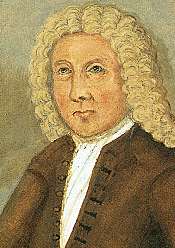 |
The Icelandic scholar Árni Magnússon (1663-1730), who had gathered in Denmark as many ancient manuscripts from Iceland as he could find, lost his books, notes and records, but did manage to save a valuable collection of handwritten Icelandic manuscripts.
Arni Magnusson was born at Kvennabrekka, in the West of Iceland, in 1663. He spent his youth at the famous farmstead of Hvamm, where his mother's father, Ketil the priest, a well-known copyist of MSS, lived. Upon Ketil's death in 1670, his son Paul succeeded him. Arni came to Copenhagen in 1683 as a poor student, but soon became acquainted with Bartholin, who employed him in writing and copying. Magnússon graduated from the University of Copenhagen in theology in 1685 but was interested chiefly in the early history and literature of Scandinavia. Arni's distinguishing attribute was a steadfast earnest character, and a shrewd and careful mind, which served him well in his choosen career, so successfully accomplished—that of a great collector.
Brynjúlfr Sveinsson, of Skalholt—commonly known as Bishop Brynjúlfr— discovered an old parchment from the latter part of the 13th century at his Episcopal seat in the year 1643 which, upon closer examination, proved to contain most of the Edda poems, previously known only from fragments quoted in Snorri Sturlusson's Edda.
Codex Regius [or The King's Book] as it came to be called because it was sent by Bishop Brynjúlfr to King Frederick III of Denmark, the founder of the Royal Library at Copenhagen.
Frederick III of Denmark had intimated to Bishop Brynjúlfr and other scholarly Icelanders, his wish to procure for the Royal Library some Icelandic books and manuscripts. Thus the Royal Library came to possess the earliest copies extant of the two Eddas, many interesting and important Saga manuscripts, law codes, and historical records from Iceland.
About the same time, or a few years later, the discovery of Codex Regius was supplemented by the discovery of a fragment of a manuscript which contained Olaf Whitepoet’s Essay on the Figures of Grammar, Snorri’s Skaldskaparmal, the Thulur, and AM no. 748, which contained the previously unknown Baldrs Draumr. Rigsþula, found in Codex Wormianus, was certainly known before 1609, when it is first mentioned by Magnus Olafsson. In 1641, Bishop Bryniolf bought a new manuscript of Snorri’s Edda (r) containing the Grotto-Song. When the Flateyjarbok came to light in 1643, Hyndluljóð, the one old poem it preserved, became known.
Bishop Brynjúlfr, unfortunately, left no heir, interested in the preservation of his library, and his books were soon scattered. With the revival of learning, however, the interest in the old was reawakened; men began zealously collecting the parchments, and scribes multiplied them through paper copies.
Although the earliest known specimens of Icelandic manuscripts can be found in the Royal Library, in the University Library of Copenhagen is the grand collection made by Arni Magnusson at the commencement of the 18th century.
There were, when Arni Magnusson began to collect, some sixty Icelandic vellums already held by foreign libraries. The first he acquired was Huida in 1687, which had just arrived in Denmark via Norway. His second purchase was AM. 132, which had been sent by an Icelander to the Danish scholar Bartholin, upon whose death Arni acquired the manuscript in 1691. From the same source, Arni also bought a second vellum, AM. 61, containing both the Olaf Sagas.
While on a royal mission to value estates and report on economic conditions, Arni Magnusson spent a decade (1702-12) travelling in Iceland from farm to farm as a Danish official, collecting any manuscripts the peasant farmers might have stored away in dark corners of oak chests, or lying about on the little book-shelves over the door. Handwritten slips, containing as much as he knew of the history of the manuscripts to which they are attached, are affixed even to fragments, and prove the care and diligence which he was willing to expend on the smallest shred of vellum.
THE ICELANDIC SAGASBishop Brynjólf died in 1675. When Arni Magnusson visited Iceland, thirty years after the Bishop's death and searched the island for surviving manuscripts, the vellum of the Islendingabok, doubtless one of the oldest Icelandic manuscripts, had entirely disappeared. He succeeded only in obtaining two paper copies of this vellum.
Heiðarviga saga (Saga of the Heath-Slayings), unquestionably the oldest of all the sagas of Iceland, was acquired in 1682 by purchase from Iceland by the Royal Academy of Antiquities in Sweden, through the agency of Jón Eggertsson. At the time of its purchase it may or may not have been a complete book. At any rate, when Arni Magnusson discovered its existence in Sweden, in 1722, it was only a remnant of a book, consisting of thirty-six leaves. Of these, the first 23 1/2 contained a fragment of a þattur and the Saga of the Heath-slayings complete. The remaining 12 1/2 leaves contained the best remaining text of the Saga of Gunnlaug Worm-tongue.
Arni Magnusson having applied to the Swedish Academy for the loan of the manuscript, obtained, fortunately, only the first twelve leaves of it, the obvious reason being that those leaves had become disconnected from the rest. Of these twelve leaves, Arni had his assistant Jón Olafsson (1705-1778), take a copy, in the latter part of the year 1727; but the original as well as copy were both destroyed in the Copenhagen fire 1728. In the following year Olafsson wrote down from memory the contents of the destroyed leaves, On a journey of antiquarian research to Stockholm in 1772, Hannes Finnsson (son of the famous historian Finnur Jónsson) discovered the lost remainder of the precious fragment.
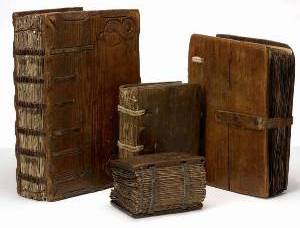 |
There are four great collections of Icelandic Manuscripts:—
The first consists of those collected by Bishop Bryniolf and presented to the king, especially those which he sent him in 1662, now in the Royal Library of Copenhagen (the old MSS. Collection, ‘Gamle Kgl. Saml.’— about fifteen in all. _
The second is the great collection of Arni Magnusson, made between the years 1690 and 1728.
The third is the Upsala Collection, which was formed by Stephanius. From the hands of the De La Gardie family these manuscripts have passed to their present locale.
And the fourth is the Stockholm Collection, of which the first part was brought together in Iceland in 1662 by Rugman; the second by Jón Eggertson in 1682.
There was formerly a fifth collection, that of the University Library of Copenhagen, many from the library of Resenius (Peder Resen). This collection was wholly destroyed by fire in 1728, save one manuscript which had been lent out to Arni Magnusson. But luckily, under the auspices of Torfaeus and other scholars, careful copies had been made of all the important Icelandic manuscripts in this University collection, and these copies are now in the Arna-Magnasan Library.
All the vellums still in Bishop Brynjólf’s possession at his death were scattered or mutilated or destroyed within a few years, and Arni could only procure fragments of what had been the finest collection in Iceland. Besides careless storage, usage, and bookbinding (for which vellums were cut in pieces, the loose plies serving to cover the wooden boards of modern printed books), Icelandic manuscripts, owing to the absence of libraries and national buildings, had much to contend with,—-the damp and smoke of the houses, which blackens and rots the parchment itself, and accounts for the dark, grimy, mouldering state of most manuscripts.
The main bulk of Old Norse manuscripts, mostly written in Iceland, but also those written and preserved in Norway, was collected with great pains and patience in the 16th century by the Icelandic-Danish archaeologist, Arni Magnusson. Professor Magnusson had an extremely keen sense in hunting them, and before his death he had covered the ground so thoroughly that all later collectors have sought in vain for even a remnant of an Old Norse manuscript. During the fire of Copenhagen in 1728 his house burned, and his large collection of printed books was destroyed by the fire. But happily the priceless collection of Old Norse manuscripts, counting more than 3000 items, was rescued.
Gudbrandr Vigfusson once said, "It is difficult to overrate the services which Arni rendered to Northern literature. But for him, the bulk of the works, which form its chief glory, would have perished slowly but surely."
Most professors at the University of Copenhagen lost all their books in the fire and the entire University Library burnt to the ground, so the preservation of such a large collection of manuscripts was a unique event.
The full extent of the damage to Árni Magnússon's manuscript collection will never be known. He never took the time to make exhaustive inventories of his manuscripts, documents and books, so the size of his collection before the Great Fire is not known. For the remainder of his life he lived in straitened circumstances and could never set out his collection so as to gain a picture of what had been rescued. He believed the damage was greater than subsequent studies have suggested and refered to this many times in the letters he wrote back to Iceland in the year after the fire. In one of them, he admits that he had managed to rescue most of his books of sagas, and scholars now believe that the oldest and most valuable core of the collection, the ancient vellum books, escaped with only a handful perishing. Nonetheless, a great assortment of documents were destroyed, paper copies from older books and various writings by Árni Magnússon himself, which he had spent a long time collecting from sources which are now lost. The greatest damage was to his printed books, the majority of which were lost in the fire. These included the last known copy of the Breviaria of 1534, the first book printed in Iceland.
The great fire of Copenhagen, in 1728, robbed the devoted antiquary of many of these treasures; but he recommenced his labours with undiminished zeal, and was able to leave to his country nearly 1,600 Icelandic manuscripts, together with a fund of 10,000 rix dollars for their publication. Little progress had been made towards carrying out his until a commission, called the Arnemagnean commission, was instituted by the King of Denmark in 1772, soon after which the publication of manuscripts began and all the most important manuscripts were presented to the public by this society. The collection is called the Arnemagnean collection, and is preserved in the University Library of Copenhagen.
Were Vellum Manuscripts of Eddic Poems lost as well?
After a career of collecting and copying Icelandic manuscripts under the ægis of the Danish crown, Arni literally escaped the fire with as many books and manuscripts of eddas and sagas as he could carry in a horsedrawn wagon. Among these are the most important manuscripts available for study today. The extent of the loss is unknown since Arni did not catalogue his sizeable collection. Although estimates vary, it has been said that he was able to rescue as little as one-fifth of his library. Regardless of the exact figure, the loss was devastating and Arni died a broken man in 1730.
Following the conflagration, Arni desperately tried to regather a semblence of what he had lost. Attempting to find copies of the eddic poems which he no longer possessed copies of, Arni writes to Jón Halldórsson:
Ég hafðe (sem brann) bref Sal. Sra Olafs (Skolameistara ockar) ahrærande eina af þessum odis (mig minnir Hrafnaga. Odins) ad Mag. Brýniolfur hafe þá qvidu uppskrifa láteð epter gömlu saurugu einstaka blade, og minnir mig þar stæde, ad þar aftan vid hefde vantad, og eins kynne um fleira gengid vera. Þetta verður svo sem allt i þoku, því documentin eru burtu,'
"I had (which burned) holy Rev. Ólafur's (our principal's) letter regarding one of these odes (I believe Hrafnagaldur Odins) a song that Magister Brynjólfur had allowed to be copied from one old, dirty leaf, and as I recall, he said that there was something missing at the end, and that it may have occurred in the same manner. This is all as if in a fog, the documents are gone."
As to the outward appearance of Icelandic vellums,—those of the Royal Library are not now in the dress they were when they first came from Iceland, having been bound in 1780-87, bearing the royal arms of Christian VII, and left not unscathed by the binder's knife. Thus in the Codex Regius of the Poetic Edda, where the index to the dialogue is often written far in the edge of the margin, this has in some instances been touched by the binder's knife. The Flateyjarbók, a colossal vellum, is now parted into two volumes. Few remain in their natural state—No. 2845 in plugged oaken boards; the Gráskinna and 1812 in sealskin. The Arne-Magnaaan. vellums are plain binding of Arni Magnusson's own time, all uncut, the shreds in pasteboard cases. A few are still in their old bare thong-plugged oak-boards, such as Huida, Njala 468, AM. 132. Best of all are the vellums in Stockholm, each volume, bound or unbound, encased in a separate case. One strange custom of Arni's must be mentioned,—the paper folios of Jón Erlendsson, Asgeir, and others, containing each a whole collection of sagas, are all cut up and distributed according to the class of the sagas throughout the library.
The Árni Magnússon Institute for Icelandic Studies: Arni Magnusson, Life and Work
The Edda Songs and Sagas of Iceland by George Browning
Sturlunga Saga, Volume 1 edited by Guðbrandur Vigfússon
Corpus Poeticum Boreale by Guðbrandur Vigfússon
